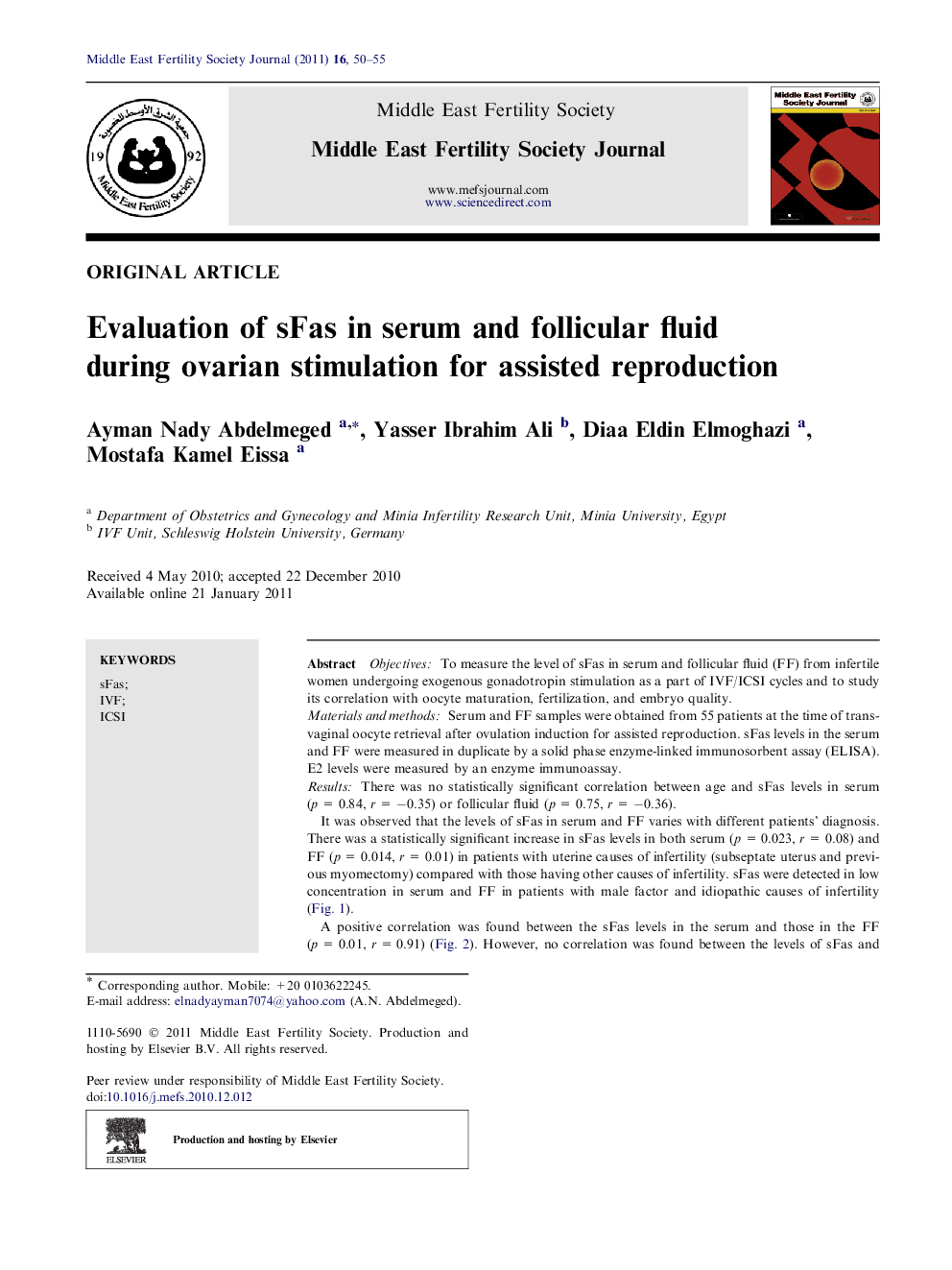| Article ID | Journal | Published Year | Pages | File Type |
|---|---|---|---|---|
| 3966456 | Middle East Fertility Society Journal | 2011 | 6 Pages |
ObjectivesTo measure the level of sFas in serum and follicular fluid (FF) from infertile women undergoing exogenous gonadotropin stimulation as a part of IVF/ICSI cycles and to study its correlation with oocyte maturation, fertilization, and embryo quality.Materials and methodsSerum and FF samples were obtained from 55 patients at the time of transvaginal oocyte retrieval after ovulation induction for assisted reproduction. sFas levels in the serum and FF were measured in duplicate by a solid phase enzyme-linked immunosorbent assay (ELISA). E2 levels were measured by an enzyme immunoassay.ResultsThere was no statistically significant correlation between age and sFas levels in serum (p=0.84, r=−0.35) or follicular fluid (p=0.75, r=−0.36).It was observed that the levels of sFas in serum and FF vary with different patients’ diagnosis. There was a statistically significant increase in sFas levels in both serum (p=0.023, r=0.08) and FF (p=0.014, r=0.01) in patients with uterine causes of infertility (subseptate uterus and previous myomectomy) compared with those having other causes of infertility. sFas were detected in low concentration in serum and FF in patients with male factor and idiopathic causes of infertility ( Fig. 1).A positive correlation was found between the sFas levels in the serum and those in the FF (p=0.01, r=0.91) ( Fig. 2). However, no correlation was found between the levels of sFas and the levels of estradiol in the serum (p=0.427, r=−0.03). There was a significant correlation between the number of fertilized oocytes and the level of sFas in the serum (p=0.013, r=−0.42) ( Fig. 3).There was no correlation between the number of fertilized oocytes and the level of sFas in FF (p=0.168, r=−0.40). However, a significant correlation between the levels of sFas in the serum of pregnant (n=11) and non-pregnant women (n=44) was observed (p=0.045, r=0.90) ( Fig. 4).ConclusionsA lower level of sFas in serum was associated with a higher pregnancy rates. This may be attributed to the presence of good fertilized oocytes. The above phenomena may suggest that low levels of sFas in serum may be associated with improved implantation of fertilized oocytes or may prevent damage to the embryo. Lower levels of sFas seem to support embryo implantation.
